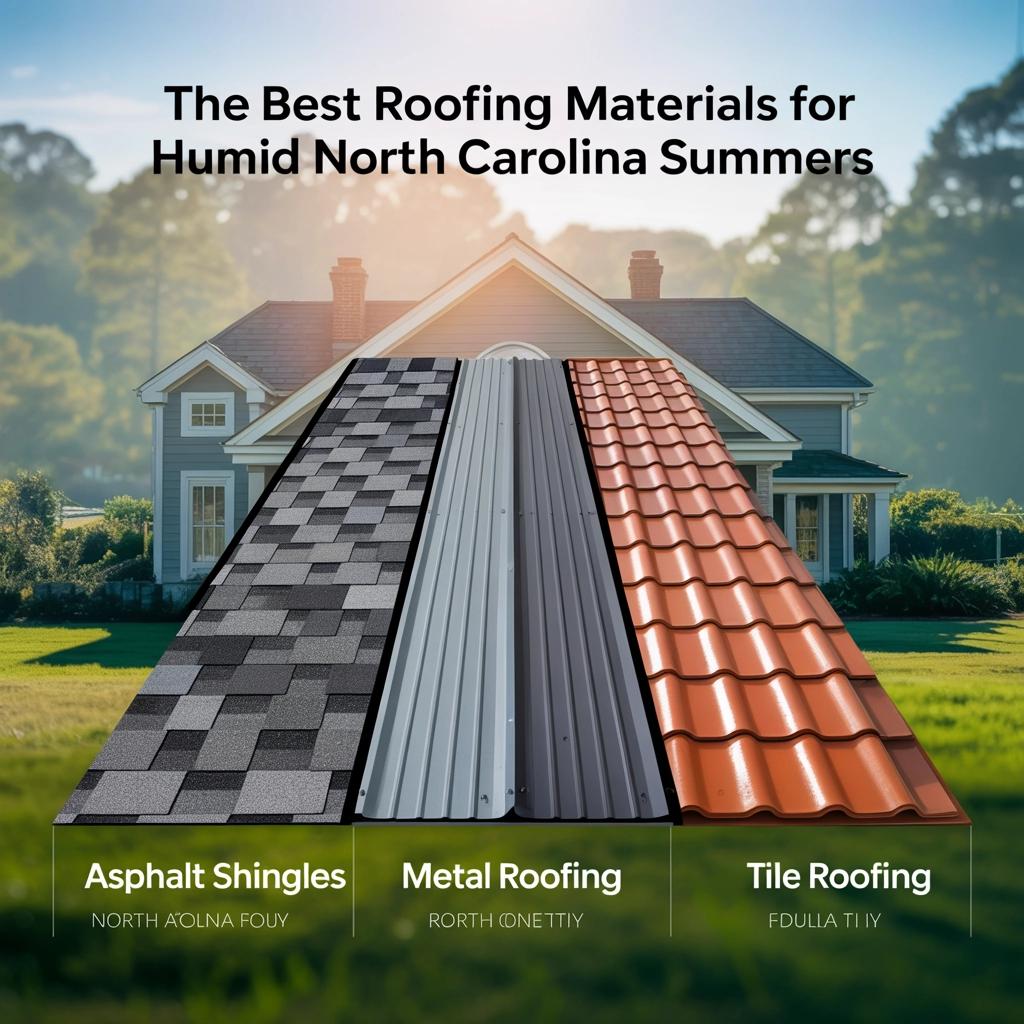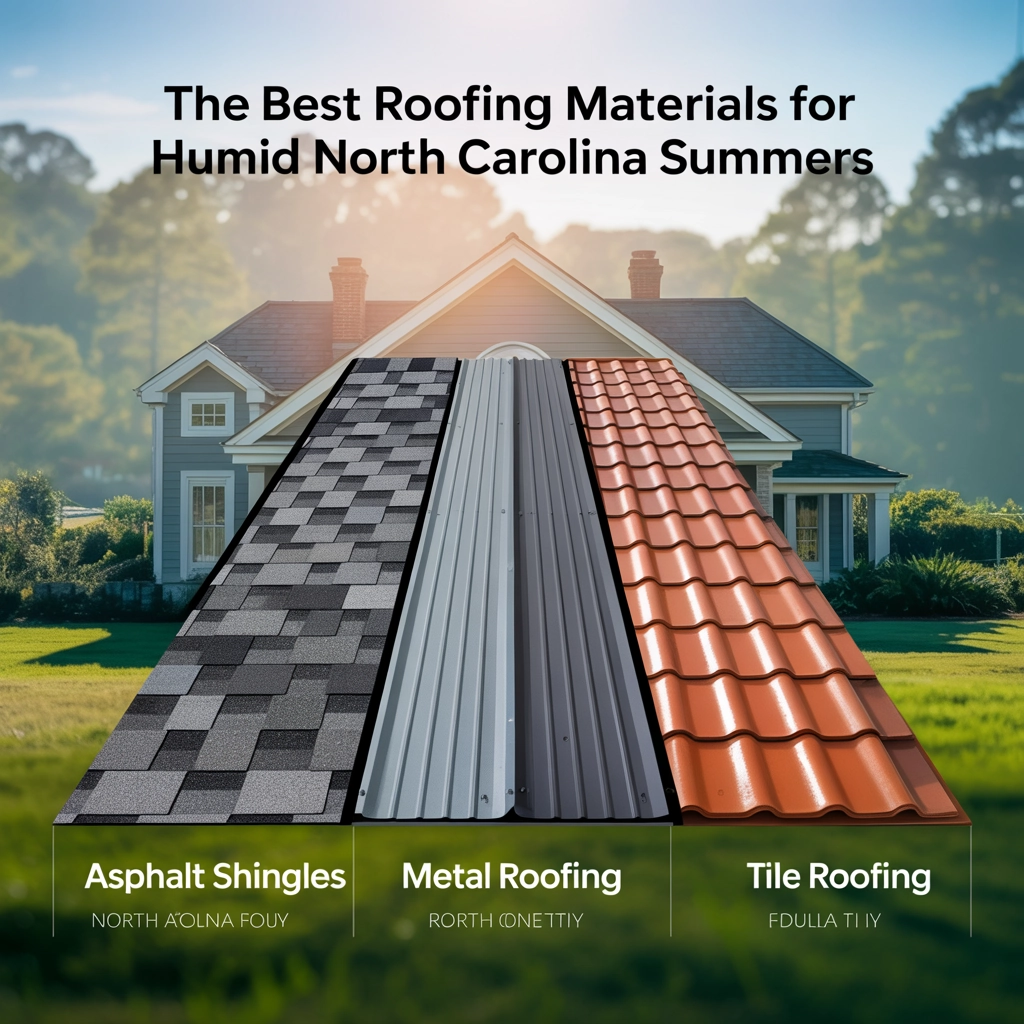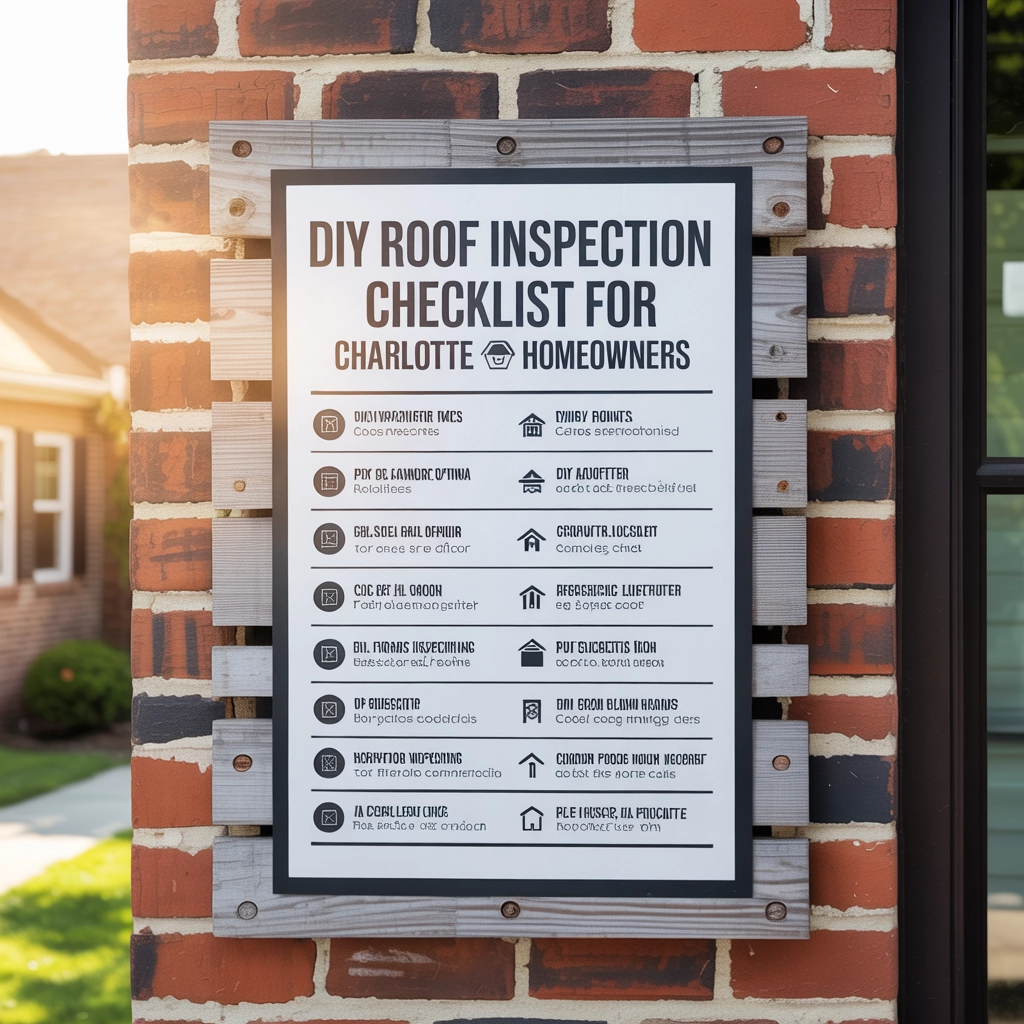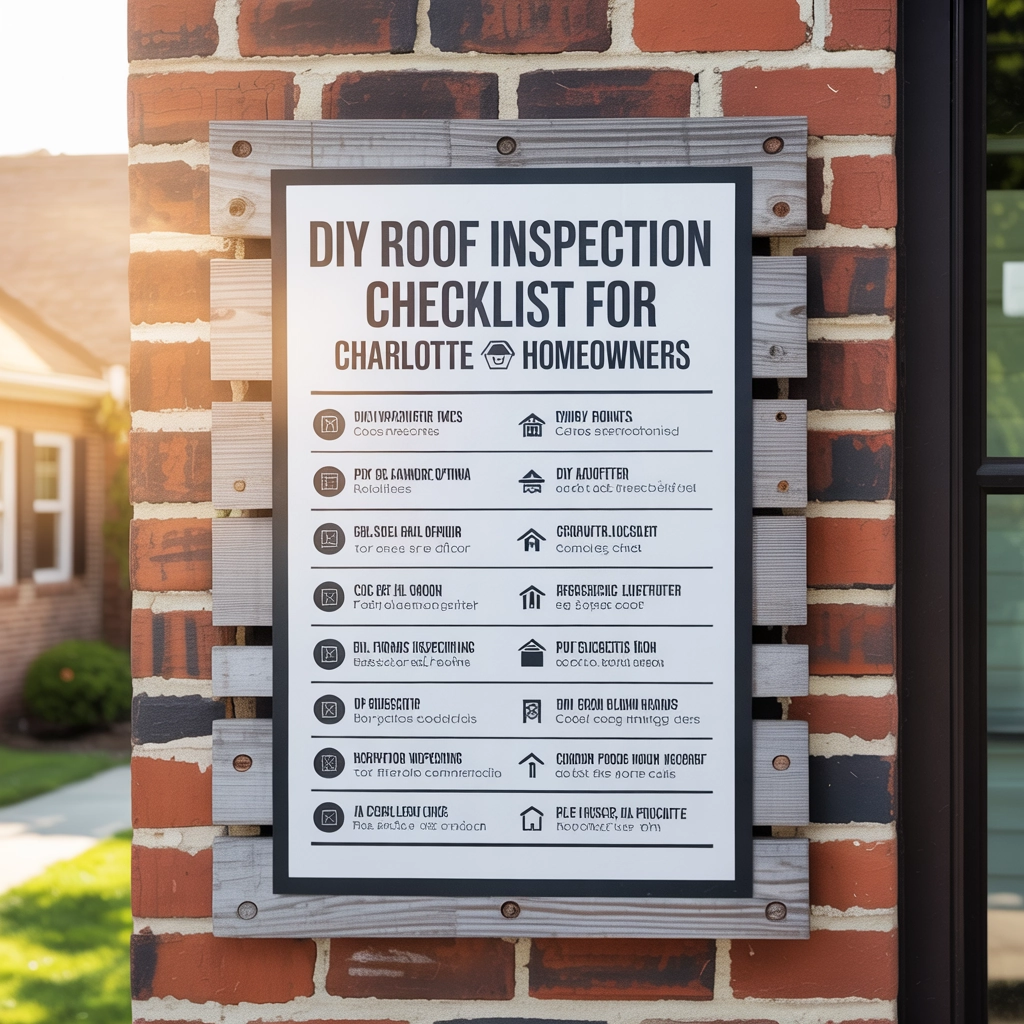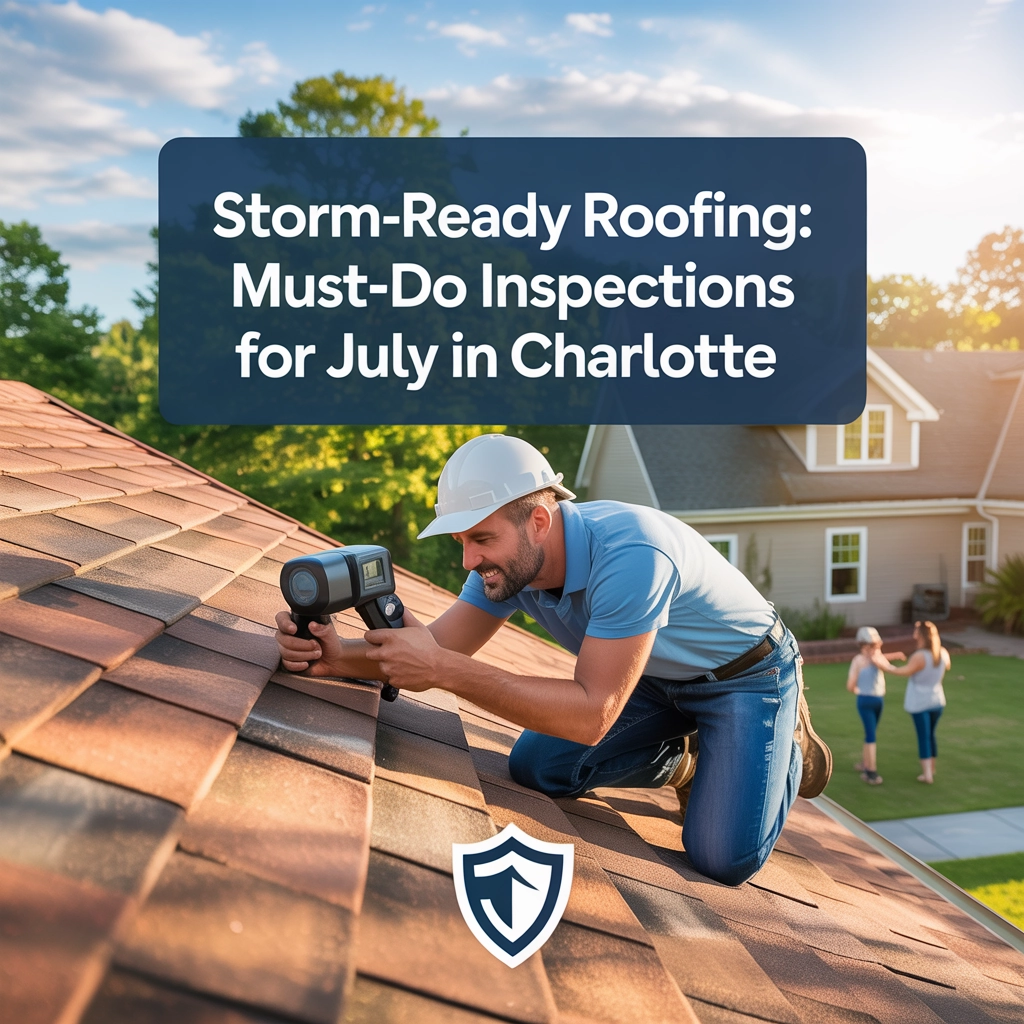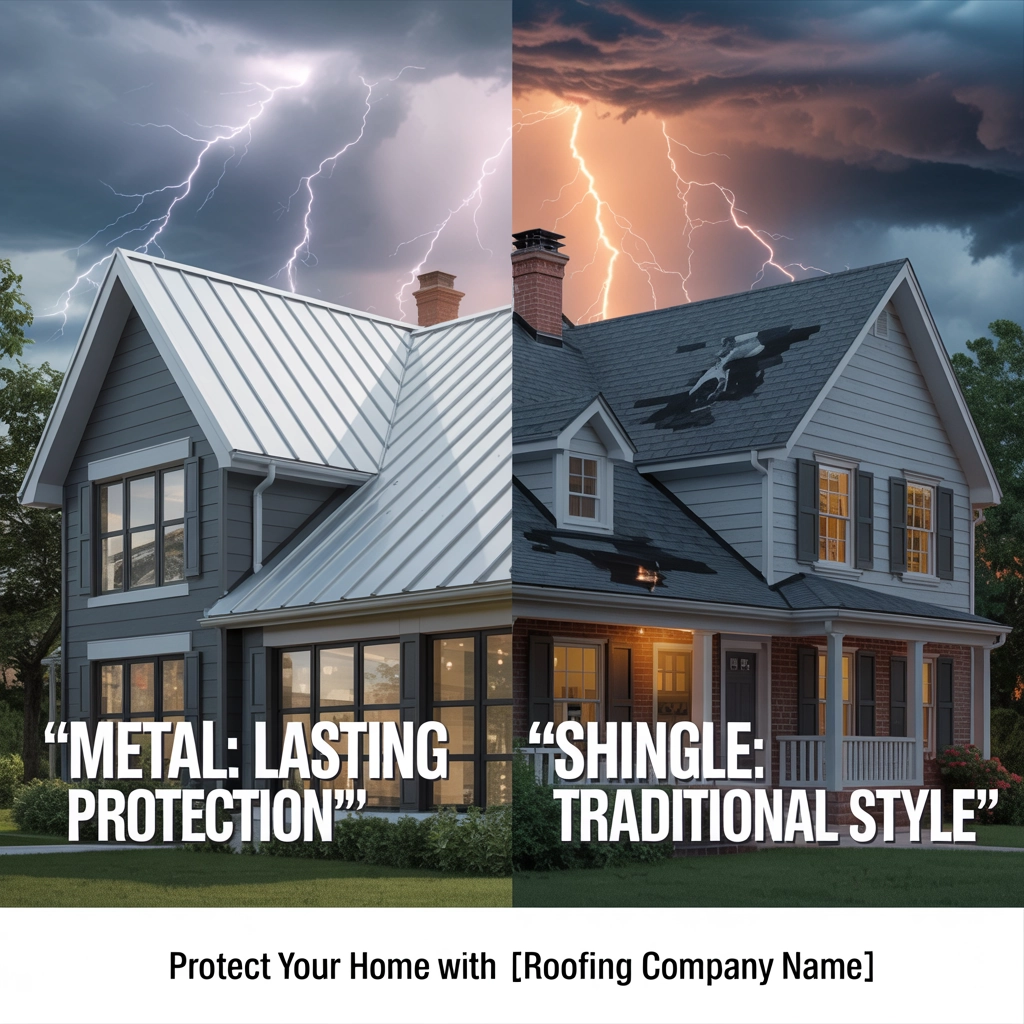Uncategorized Blog Archive
The Best Roofing Materials for Humid North Carolina Summers
Living in North Carolina means enjoying beautiful landscapes and a rich cultural heritage. But it also means dealing with those notoriously humid summers that can wreak havoc on your home—particularly your roof. When temperatures climb and humidity levels soar above 80%, your roofing materials face a perfect storm of moisture, heat, and occasional tropical systems that can accelerate deterioration. At Best Roofing Now, we've helped thousands of North Carolina homeowners choose materials that stand up to our unique climate challenges. Let's explore the best options for keeping your home protected and energy-efficient during those sticky summer months. Understanding North Carolina's Climate Challenges North Carolina's climate presents several specific challenges for roofing materials: High Humidity: Average summer humidity levels between 70-80% create ideal conditions for mold, mildew, and algae growth Intense Heat: Summer temperatures regularly exceed 90°F, causing thermal expansion and contraction Sudden Storms: From afternoon thunderstorms to hurricane season threats, roofing materials must withstand rapid weather changes UV Exposure: Extended daylight hours intensify UV radiation that breaks down traditional roofing materials "The combination of heat and humidity in North Carolina creates one of the most challenging environments for building materials," explains our lead roofing specialist. "Materials that might last 30 years in drier climates often need replacement in just 15-20 years here." Top Roofing Materials for North Carolina Homes 1. Metal Roofing: The Humidity Champion Metal roofing consistently ranks as our top recommendation for North Carolina's climate, particularly in areas that experience both high humidity and storm threats. Key Benefits: Superior Moisture Resistance: Unlike porous materials, metal doesn't absorb water or support organic growth Exceptional Longevity: 40-70 year lifespan even in humid conditions Energy Efficiency: Reflects up to 85% of solar heat, reducing cooling costs by 20-25% Wind Resistance: Withstands hurricane-force winds up to 140 mph Low Maintenance: Requires minimal upkeep even in humid environments Metal roofing comes in various styles, from traditional standing seam to metal shingles that mimic the appearance of slate or wood. The initial investment runs higher than asphalt (typically $8-14 per square foot installed), but the long-term value makes it extremely cost-effective. For North Carolina homeowners seeking maximum durability and energy efficiency, explore our residential roofing options featuring premium metal systems. 2. Synthetic/Composite Shingles: Modern Moisture Fighters Synthetic roofing materials represent the cutting edge of roofing technology, engineered specifically to address challenges like humidity and heat. Key Benefits: Superior Mold Resistance: Advanced polymers resist organic growth even in high humidity Authentic Appearance: Modern composites convincingly mimic slate, wood, or tile Impact Resistance: Withstands hail and storm debris common in summer storms UV Stability: Enhanced resistance to sun damage compared to traditional materials Lightweight: Doesn't require structural reinforcement like heavier options "Synthetic materials have revolutionized roofing in humid climates," notes our installation manager. "They give homeowners the aesthetic they want without the moisture vulnerabilities of natural materials." These innovative materials typically cost between $7-12 per square foot installed and carry warranties ranging from 30-50 years. 3. Clay or Concrete Tiles: Time-Tested Heat Handlers For homeowners seeking…
The Best Roofing Materials for Humid North Carolina Summers
Living in North Carolina means enjoying beautiful landscapes and a rich cultural heritage. But it also means dealing with those notoriously humid summers that can wreak havoc on your home—particularly your roof. When temperatures climb and humidity levels soar above 80%, your roofing materials face a perfect storm of moisture, heat, and occasional tropical systems that can accelerate deterioration. At Best Roofing Now, we've helped thousands of North Carolina homeowners choose materials that stand up to our unique climate challenges. Let's explore the best options for keeping your home protected and energy-efficient during those sticky summer months. Understanding North Carolina's Climate Challenges North Carolina's climate presents several specific challenges for roofing materials: High Humidity: Average summer humidity levels between 70-80% create ideal conditions for mold, mildew, and algae growth Intense Heat: Summer temperatures regularly exceed 90°F, causing thermal expansion and contraction Sudden Storms: From afternoon thunderstorms to hurricane season threats, roofing materials must withstand rapid weather changes UV Exposure: Extended daylight hours intensify UV radiation that breaks down traditional roofing materials "The combination of heat and humidity in North Carolina creates one of the most challenging environments for building materials," explains our lead roofing specialist. "Materials that might last 30 years in drier climates often need replacement in just 15-20 years here." Top Roofing Materials for North Carolina Homes 1. Metal Roofing: The Humidity Champion Metal roofing consistently ranks as our top recommendation for North Carolina's climate, particularly in areas that experience both high humidity and storm threats. Key Benefits: Superior Moisture Resistance: Unlike porous materials, metal doesn't absorb water or support organic growth Exceptional Longevity: 40-70 year lifespan even in humid conditions Energy Efficiency: Reflects up to 85% of solar heat, reducing cooling costs by 20-25% Wind Resistance: Withstands hurricane-force winds up to 140 mph Low Maintenance: Requires minimal upkeep even in humid environments Metal roofing comes in various styles, from traditional standing seam to metal shingles that mimic the appearance of slate or wood. The initial investment runs higher than asphalt (typically $8-14 per square foot installed), but the long-term value makes it extremely cost-effective. For North Carolina homeowners seeking maximum durability and energy efficiency, explore our residential roofing options featuring premium metal systems. 2. Synthetic/Composite Shingles: Modern Moisture Fighters Synthetic roofing materials represent the cutting edge of roofing technology, engineered specifically to address challenges like humidity and heat. Key Benefits: Superior Mold Resistance: Advanced polymers resist organic growth even in high humidity Authentic Appearance: Modern composites convincingly mimic slate, wood, or tile Impact Resistance: Withstands hail and storm debris common in summer storms UV Stability: Enhanced resistance to sun damage compared to traditional materials Lightweight: Doesn't require structural reinforcement like heavier options "Synthetic materials have revolutionized roofing in humid climates," notes our installation manager. "They give homeowners the aesthetic they want without the moisture vulnerabilities of natural materials." These innovative materials typically cost between $7-12 per square foot installed and carry warranties ranging from 30-50 years. 3. Clay or Concrete Tiles: Time-Tested Heat Handlers For homeowners seeking…
DIY Roof Inspection Checklist for Charlotte Homeowners
Why Charlotte Homeowners Need Regular Roof Inspections Your roof is your home's first line of defense against Charlotte's unpredictable weather patterns – from scorching summer heat to sudden thunderstorms and everything in between. Regular inspections can help you catch minor issues before they become major problems, potentially saving you thousands in emergency repairs. "Most catastrophic roof failures could have been prevented with routine inspections and maintenance," says James Turner, owner of Best Roofing Now. "In Charlotte's climate, we recommend homeowners inspect their roofs at least twice a year – ideally in spring and fall." While professional inspections are always recommended, there's plenty you can do yourself to monitor your roof's health between professional visits. This DIY checklist will help you identify potential issues early and determine when it's time to call in the experts. Safety First: Before You Start Before grabbing that ladder, remember that roof safety is non-negotiable. Here's what you need to know: Never inspect alone. Always have someone with you to hold the ladder and assist if needed. Weather matters. Choose a clear, dry day with minimal wind. Proper footwear is essential. Wear shoes with good traction. Use the right equipment. A sturdy extension ladder, binoculars, flashlight, and smartphone for photos are must-haves. Know your limits. If your roof is steeply pitched, over one story, or you're uncomfortable with heights, stick to ground-level and attic inspections only. Remember: When in doubt, call a professional. No DIY inspection is worth risking your safety. Ground-Level Inspection: What to Look For Start your inspection from the safety of the ground. With a good pair of binoculars, you can spot many potential issues without ever setting foot on a ladder. Shingles Check Missing or damaged shingles: Look for bare spots or shingles that are cracked, curled, or buckled. Granule loss: Dark patches or bald spots on asphalt shingles indicate they're nearing the end of their life. Uneven sections: Any noticeable dips or waves could indicate structural problems beneath. Structural Elements Fascia and soffits: Check for rotting, peeling paint, or visible damage. Chimney: Look for cracked or missing mortar, leaning, or deterioration. Flashing: Examine the metal pieces around chimneys, vents, and joints for rust or displacement. Drainage System Gutters and downspouts: Check for proper attachment, sagging sections, visible damage, or vegetation growing in them. Water flow: After rain, observe if water flows properly through the downspouts and away from your foundation. "The ground-level inspection is often underrated," Turner notes. "With good binoculars, you can identify 70-80% of common roof issues without ever climbing a ladder." Ladder Inspection: Getting a Closer Look If you're comfortable using a ladder and your roof isn't too steep, you can get a closer look at specific areas of concern. Remember to follow all ladder safety guidelines and never walk on your roof unless you're trained to do so. Setting Up Safely Place your ladder on solid, level ground. Extend it at least 3 feet above the roof edge. Secure the ladder at the top if possible. Maintain…
DIY Roof Inspection Checklist for Charlotte Homeowners
Why Charlotte Homeowners Need Regular Roof Inspections Your roof is your home's first line of defense against Charlotte's unpredictable weather patterns – from scorching summer heat to sudden thunderstorms and everything in between. Regular inspections can help you catch minor issues before they become major problems, potentially saving you thousands in emergency repairs. "Most catastrophic roof failures could have been prevented with routine inspections and maintenance," says James Turner, owner of Best Roofing Now. "In Charlotte's climate, we recommend homeowners inspect their roofs at least twice a year – ideally in spring and fall." While professional inspections are always recommended, there's plenty you can do yourself to monitor your roof's health between professional visits. This DIY checklist will help you identify potential issues early and determine when it's time to call in the experts. Safety First: Before You Start Before grabbing that ladder, remember that roof safety is non-negotiable. Here's what you need to know: Never inspect alone. Always have someone with you to hold the ladder and assist if needed. Weather matters. Choose a clear, dry day with minimal wind. Proper footwear is essential. Wear shoes with good traction. Use the right equipment. A sturdy extension ladder, binoculars, flashlight, and smartphone for photos are must-haves. Know your limits. If your roof is steeply pitched, over one story, or you're uncomfortable with heights, stick to ground-level and attic inspections only. Remember: When in doubt, call a professional. No DIY inspection is worth risking your safety. Ground-Level Inspection: What to Look For Start your inspection from the safety of the ground. With a good pair of binoculars, you can spot many potential issues without ever setting foot on a ladder. Shingles Check Missing or damaged shingles: Look for bare spots or shingles that are cracked, curled, or buckled. Granule loss: Dark patches or bald spots on asphalt shingles indicate they're nearing the end of their life. Uneven sections: Any noticeable dips or waves could indicate structural problems beneath. Structural Elements Fascia and soffits: Check for rotting, peeling paint, or visible damage. Chimney: Look for cracked or missing mortar, leaning, or deterioration. Flashing: Examine the metal pieces around chimneys, vents, and joints for rust or displacement. Drainage System Gutters and downspouts: Check for proper attachment, sagging sections, visible damage, or vegetation growing in them. Water flow: After rain, observe if water flows properly through the downspouts and away from your foundation. "The ground-level inspection is often underrated," Turner notes. "With good binoculars, you can identify 70-80% of common roof issues without ever climbing a ladder." Ladder Inspection: Getting a Closer Look If you're comfortable using a ladder and your roof isn't too steep, you can get a closer look at specific areas of concern. Remember to follow all ladder safety guidelines and never walk on your roof unless you're trained to do so. Setting Up Safely Place your ladder on solid, level ground. Extend it at least 3 feet above the roof edge. Secure the ladder at the top if possible. Maintain…
Storm-Ready Roofing: Must-Do Inspections for July in Charlotte
Why July Roof Inspections Are Critical in Charlotte July marks the beginning of Charlotte's most active storm season. With hurricane season officially underway and summer thunderstorms becoming more frequent, your roof faces increased risk from high winds, heavy rainfall, and potential debris impact. At Best Roofing Now, we've seen firsthand how proactive July inspections can mean the difference between minor repairs and major roof replacements. Charlotte's unique climate patterns create specific challenges for homeowners. Summer storms can bring wind gusts exceeding 60 mph, while hurricane season (running through November) increases the risk of sustained downpours that test your roof's water resistance. The combination of high heat, humidity, and sudden storms creates perfect conditions for exposing weaknesses in your roofing system. Don't wait until water is dripping through your ceiling. By scheduling inspections now, you'll have ample time to address any issues before peak hurricane season arrives in August and September. The 7-Point Storm-Ready Roof Inspection Checklist 1. Shingle Integrity Assessment Your shingles are your roof's first line of defense against the elements. During a proper July inspection, we look for: Curling or buckling shingles: Often indicates age or excessive heat exposure Missing granules: Creates weak points vulnerable to water penetration Loose or missing shingles: Can allow water intrusion and lead to progressive damage Impact damage: Small dents or cracks from previous storms that could worsen Even minor shingle damage can compromise your entire roofing system during a severe storm. Small openings allow water to penetrate the underlayment, potentially causing rot in the decking beneath. 2. Flashing Inspection Flashing creates watertight seals around roof penetrations and transitions. In Charlotte's storm conditions, compromised flashing becomes an immediate vulnerability. Look for: Rusted or corroded metal: Especially common around older chimneys and vents Separated seams: Where flashing has pulled away from surfaces Cracked caulking: Often occurs around skylights and chimney caps Bent or damaged sections: Can create entry points for water Flashing issues account for approximately 30% of roof leaks we repair in Charlotte homes. These critical transition areas need special attention during your July inspection. 3. Gutter and Downspout Evaluation Your gutter system plays a crucial role in directing water away from your home during heavy rainfall. A thorough inspection includes: Cleaning debris accumulation: Prevents water backup under shingles Checking for proper attachment: Ensures gutters won't pull away during high winds Inspecting for rust or cracks: Identifies potential failure points Verifying downspout function: Ensures water flows away from your foundation During Charlotte's summer storms, a single clogged downspout can force gallons of water back under your roofing materials, causing extensive damage to your home's structure. 4. Attic Assessment Many homeowners overlook this critical inspection element. The underside of your roof can reveal problems not visible from the exterior: Moisture stains: Indicating existing leaks Daylight penetration: Showing gaps in roofing materials Proper ventilation: Essential for preventing heat and moisture buildup Structural integrity: Checking for sagging or damaged roof supports Proper attic ventilation is particularly important in Charlotte's humid climate. Excessive heat buildup can damage…
Metal vs. Shingle Roofs: Which is Better for North Carolina Weather?
When it comes to protecting your home in North Carolina, your roofing choice is critical. From coastal hurricanes to mountain snowstorms and everything in between, NC homeowners face diverse weather challenges that put roofing materials to the test. At Best Roofing Now, we're often asked whether metal or asphalt shingle roofs perform better in our state's unique climate. Let's break down this comparison to help you make the best decision for your home. Understanding North Carolina's Weather Challenges North Carolina's climate is nothing if not diverse. Living here means your roof needs to withstand: Hot, humid summers with temperatures regularly exceeding 90°F Hurricane season bringing powerful winds and torrential rain Winter storms with freezing rain, ice, and occasional heavy snow Rapid temperature fluctuations, especially during spring and fall High UV exposure throughout much of the year These conditions demand roofing materials that can handle moisture, heat, cold, wind, and sun without premature failure. Let's see how metal and shingles stack up. Metal Roofing: The Durable Contender Durability and Lifespan Metal roofing systems typically last 40-70 years when properly installed, making them a genuinely long-term investment. Modern metal roofs bear little resemblance to the tin barns of yesteryear—today's options feature advanced coatings and engineering that stand up to North Carolina's most challenging conditions. "We've installed metal roofs that have weathered multiple hurricanes without a single panel coming loose," says James Turner, owner of Best Roofing Now. "Their interlocking panel design creates an exceptionally weather-tight barrier." Weather Performance Metal roofing excels in several aspects of North Carolina's climate: Hurricane Resistance: Quality metal roofing can withstand winds up to 140 mph, surpassing building code requirements for coastal regions. Heat Management: Metal reflects solar radiation rather than absorbing it, reducing cooling costs by 10-25% during those sweltering Carolina summers. Snow and Ice Handling: The smooth surface of metal roofing allows snow to slide off more easily, preventing damaging ice dams in mountain and Piedmont regions. Moisture Resistance: Metal's non-porous surface prevents water absorption and resists mold and algae growth—a significant advantage in our humid climate. The Cost Factor Let's address the elephant in the room: metal roofing typically costs 2-3 times more upfront than asphalt shingles. For an average North Carolina home, expect to invest $12,000-$25,000 for quality metal roofing installation. However, this higher initial investment comes with significant long-term returns: Minimal maintenance costs over decades Potential insurance discounts (up to 35% in some coastal counties) Energy savings of 10-25% on cooling costs Increased home value (typically 1-6% according to real estate studies) Asphalt Shingles: The Popular Choice Durability and Lifespan Traditional asphalt shingles typically last 20-30 years in North Carolina's climate. Premium architectural or dimensional shingles may extend this to 25-35 years with proper maintenance. "Shingles remain our most-requested material because they're familiar and budget-friendly," notes Turner. "Many homeowners in the Piedmont region get excellent performance from quality architectural shingles when they're properly installed and maintained." Weather Performance Asphalt shingles have improved significantly over the years but still face challenges in our climate:…


